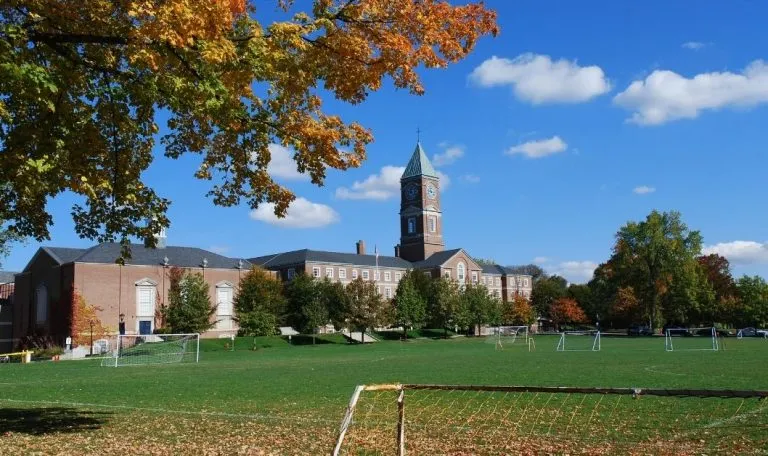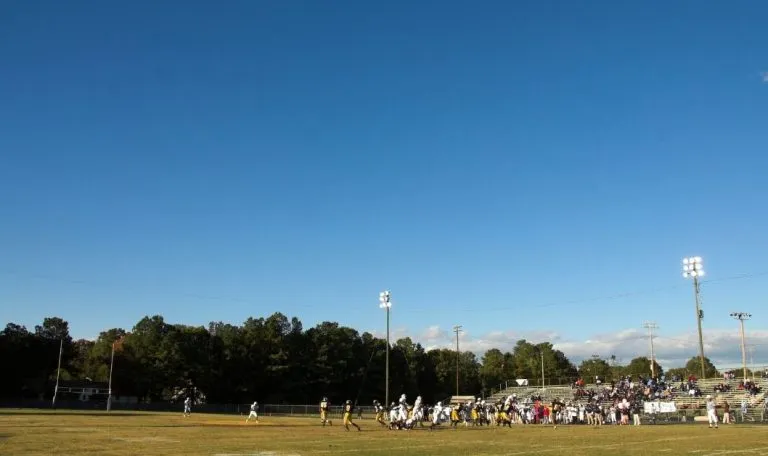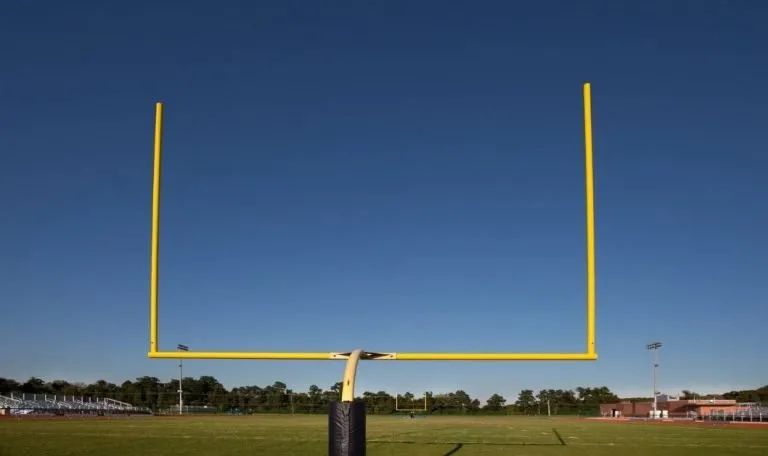Home » Artificial Turf Field » Why more high schools are choosing artificial turf for their sports fields
Why more high schools are choosing artificial turf for their sports fields

The sports fields are a centerpiece for many high schools, a source of school pride, booster support, and recruiting power. Athletic directors are increasingly recognizing the benefits of artificial turf over natural grass when it comes time to upgrade their facilities or add to the complex.
High school colors, mascots, and logos are some of the most recognizable symbols in your community. When the logo is printed at the 50-yard line and the end zones match what the players and fans are wearing, you want them to be bright and sharp, especially late in the season.
Whereas markings on natural grass will fade in the sunlight, grow out with the grass, and get scuffed by the players, artificial turf fields retain their look week after week. This creates a better look for the fans and cameras and provides better visual contrast for the players on the field.
The uniformity and consistency of artificial turf fields make them safer for the players, but let’s take a break from talking about them and think about another group that spends time in the spotlight and on the field: the high school marching band.

Marching band members need a smooth, consistent surface underfoot as they go through their choreography and hit their marks. Synthetic turf will make their marks easier to find out of the corner of their eyes, giving them better alignment. The regularity of the surface will minimize the risk of someone stumbling, tripping, or slipping on a rock, hole, or mud patch. Think of the embarrassment the band member – well, the band and school as a whole – would suffer if they were wiped out while walking backward. Not to mention the safety issue: no one wants to fall face-first into a clarinet, nor hit the ground pinned under a tuba.
Building a new sports facility will require a lot of support from your boosters, alumni, and sponsors. They’re going to want a long-lasting return on investment. Artificial fields outlive natural grass over the course of a season and over the course of years. Artificial turf fields have a lifespan of up to 10 years, and a rugged in year-round weather. Natural grass fields need major overhauls every 4-6 years and can be severely damaged by a major weather event.
The construction project can be a way for you to re-energize your development and sponsorship efforts. This may be the first time you’ve had to reach out to these individuals, institutions, and networks. While you hopefully won’t be introducing yourself shortly before asking for a donation, this is an opportunity to start a prolonged engagement. Instead of simply soliciting contributions, high schools are leveraging new construction for annual giving commitments, multi-year sponsorships, broadcast and streaming opportunities, and municipal engagement.
Additional reading:

Breaking ground on a new sports complex could be the trigger to pull a donor off the sidelines and into the action.
Artificial turf fields satisfy a lot of sweet spots for high school athletic directors. You can start the process on our cost calculator to get a ballpark figure on what your project may cost and get plugged into our network of industry experts to help with every aspect of sports facility construction.

